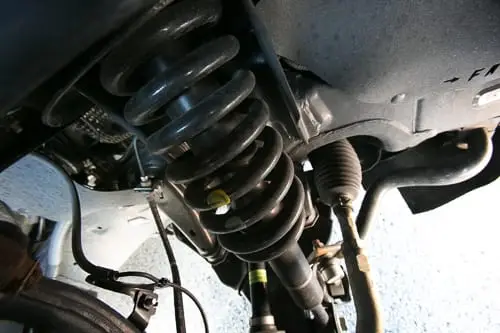Do Struts Need to Be Replaced?


CARS.COM — Your car’s struts are a vital part of its suspension system. They are structural in nature, and they are mounted to the top of the car’s chassis. Struts come down through the chassis and provide a location to mount the coil spring, which maintains the car’s height. Both the front struts and rear struts are extremely important.
Unfortunately, they can wear out. So when do you need to replace them? Let’s take a closer look.
Related: Struts and Shock Absorbers: What You Need to Know
Struts don’t need to be replaced unless your vehicle is bouncing like it’s on a pogo stick or bottoms out in potholes and over railroad tracks — or unless a mechanic finds that they’re leaking fluid or have been damaged. In some climates, they can also rust.
In a vehicle with a strut-type suspension, the struts are the “shock absorbers” mounted inside coil springs. They replace other types of shock absorbers, and they are commonly used because they make suspension systems more affordable. They control the amount of bouncing created by bumps, dips and peaks in the road and making a hard or sudden stop. “Shock absorber” is a misleading term because the springs actually absorb the road shocks. The struts limit the resulting bouncing caused by the springs compressing and releasing. More correctly, they should be called “dampers” instead of “shock absorbers.”
When vehicle owners experience a loss in ride quality or handling ability, their first notion might be that they need to have new struts installed on their vehicle. Advertising campaigns by strut manufacturers to change them every 50,000 miles or so have helped reinforce that notion. Be aware: Unless your vehicle is experiencing excessive bouncing, as described above, or leans excessively in turns, any ride or handling or steering issues (or unusual noises) could originate from other suspension components. For that reason, it pays to have a qualified mechanic check under your car.
A thorough inspection will determine if struts are why you are no longer experiencing a smooth ride or having problems with handling or steering. The struts could be leaking or the rubber bushings that act like cartilage protecting a joint might have worn, allowing metal-to-metal contact. The strut assembly may have become damaged due to rust or age, as well. On the other hand, the problem could be elsewhere. Bushings and other parts in the suspension, such as tie rods, control arms and sway-bar links, can also wear out and cause loose steering, noise over bumps and more body lean in turns. Improper wheel alignment and uneven tire wear could also cause some of these problems.
The more you carry heavy loads or drive on truly rough roads, the faster the struts will wear, but they often last the life of a vehicle if you don’t abuse them. Don’t automatically ask your mechanic for new struts when you sense a problem; instead, explain what you’re experiencing and let an expert figure out if worn struts are causing problems with your car. You could have a different suspension problem, or your vehicle may be suffering from something else entirely.
Cars.com’s Editorial department is your source for automotive news and reviews. In line with Cars.com’s long-standing ethics policy, editors and reviewers don’t accept gifts or free trips from automakers. The Editorial department is independent of Cars.com’s advertising, sales and sponsored content departments.

Contributor Rick Popely has covered the auto industry for decades and hosts a weekly online radio show on TalkZone.com.
Featured stories




